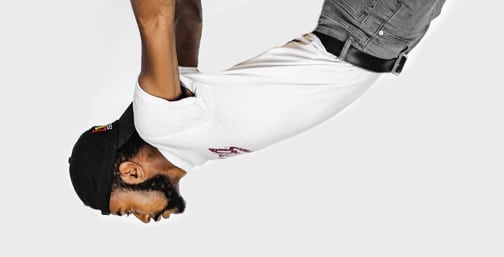These days the Dutch are lauded for their successful establishment of euthanasia within carefully controlled guidelines. To hear the “right-to-die” people tell it, The Netherlands is living proof that a modem society can control doctor-induced death and prevent abuse.
When I read recently that Dutch Dr. Sippe Schat had been charged with murder in the euthanasia death of one of his patients last April, I thought to myself, “Maybe at last the Dutch have felt the sting of the criticism that they fail to enforce their own guidelines. Let’s see if Dr. Schat is sacrificed for the sake of the international Dutch image.”
Last April Dr. Schat gave terminally ill Dora Brattinga, 72, a fatal dose of insulin at her request. Although such killing is accepted in Holland, Schat failed to follow official guidelines. He erred in that initially he falsified the death certificate by reporting that death had occurred from natural causes, he failed to seek a second opinion, and he did not provide proof that Brattinga asked to be killed. He broke not merely one, but three rules!
The District Court in Leeuwarden agreed that Dr. Schat had violated guidelines. However they refused to convict him of murder, and on April 8 he walked free. Apparently the guidelines are optional.

As a matter of fact, the majority (59%) of Dutch doctors do not report voluntary euthanasia and assisted-suicide deaths. And yet they are crowing over their progress from a reporting rate of 18% in 1990 to 41 % in 1995.
Which brings me to the follow-up study of the Remmelink Report, released in 1996. This study compares the 1990 statistics of the Remmelink Report with new statistics gleaned from 1995. According to this report, there is no slippery slope in the Netherlands.
Quite a different picture emerges, however, when the statistics are examined closely. Although there was an increase of a trifling less-than-l % in euthanasia deaths compared to all deaths over the five-year period, when one compares the numbers of euthanasia and assisted-suicide deaths in those two years with each other, one sees an increase by a minimum of 29.2% and a maximum of 44%!
Furthermore, 55% of the physicians interviewed reported “they had ended a patient’s life without his or her explicit request” or that they had not yet, but conceivably might.
To the Dutch, unlike the rest of the world, “non-voluntary euthanasia” is a contradiction in terms. They prefer to call unasked-for killing “termination of the patient without explicit request.” The most common reason for non-voluntary termination of a patient is the doctor’s self-perceived inability to treat pain effectively. Other justifications include “low quality of life” and “all treatment was withdrawn but the patient did not die.”
We still have glimpsed only the tip of the iceberg. The Remmelink Commission reported that doctors terminated a “mere” 1000 people in 1990 without their consent. But the Dutch have other ways of ending people’s lives. One such means is “alleviation of pain and symptoms.” A full 82% of physicians interviewed had at some time “given such high doses of morphine or morphine-like drugs that it almost certainly would shorten the life of the patient.” Although 41% of the patients terminated in this way had “hinted” at termination, 59% had, to the doctors’ knowledge, never indicated anything at all. In sum, in over 5,000 cases it was the physician’s explicit intention to cause death by administering pain medication or withholding treatment; in an additional 11,000 cases it was his “secondary goal.”
The Dutch arsenal is not yet depleted. A “non-treatment decision” can also be utilized for deliberate killing; this is not, according to them, “euthanasia.” The Remmelink Report estimates that in The Netherlands, approximately 25,000 patients die every year as a result of such a decision, made without their explicit request. In 35% of these cases, the decision was made “partly with the purpose to shorten life” (19%) or “with the explicit purpose to shorten life” (16%). In only 51% of these cases was the patient totally unable to take part in the decision; the most common reason for being partially unable was dementia.
All in all, thousands of persons are killed in The Netherlands every year without their request, often despite the opportunity to ask. Dr. Herbert Cohen, a well-known and influential palliative care physician in The Netherlands claims that “death is influenced by a doctor’s decision in almost all non-traumatic cases. Death is an orchestrated happening.” What is acclaimed as Dutch autonomy is in reality more like Dutch “doctor” autonomy. And the legal system looks the other way.
Is Dr. Sippe Schat exceptional? One might answer that question in either of two ways. He is exceptional in that he is one of the very few physicians in Holland ever to be charged with a crime in practicing euthanasia. He is typical, however, of the majority of physicians who practice killing patients outside the official guidelines.
It takes great earth-movers to cover a slope. Despite the earth-moving activity of the Dutch, however, here is a slope that can’t be concealed. During World War II Dutch doctors to a man—at considerable personal risk—refused to euthanize patients when instructed to do so by the German occupation. In the words of journalist Malcolm Muggeridge, it took only a few decades “to transform a war crime into an act of compassion.”
Mrs. Phyllis J. King, the wife of an Orthodox Presbyterian minister, is a media spokesperson for the pro-life cause.
